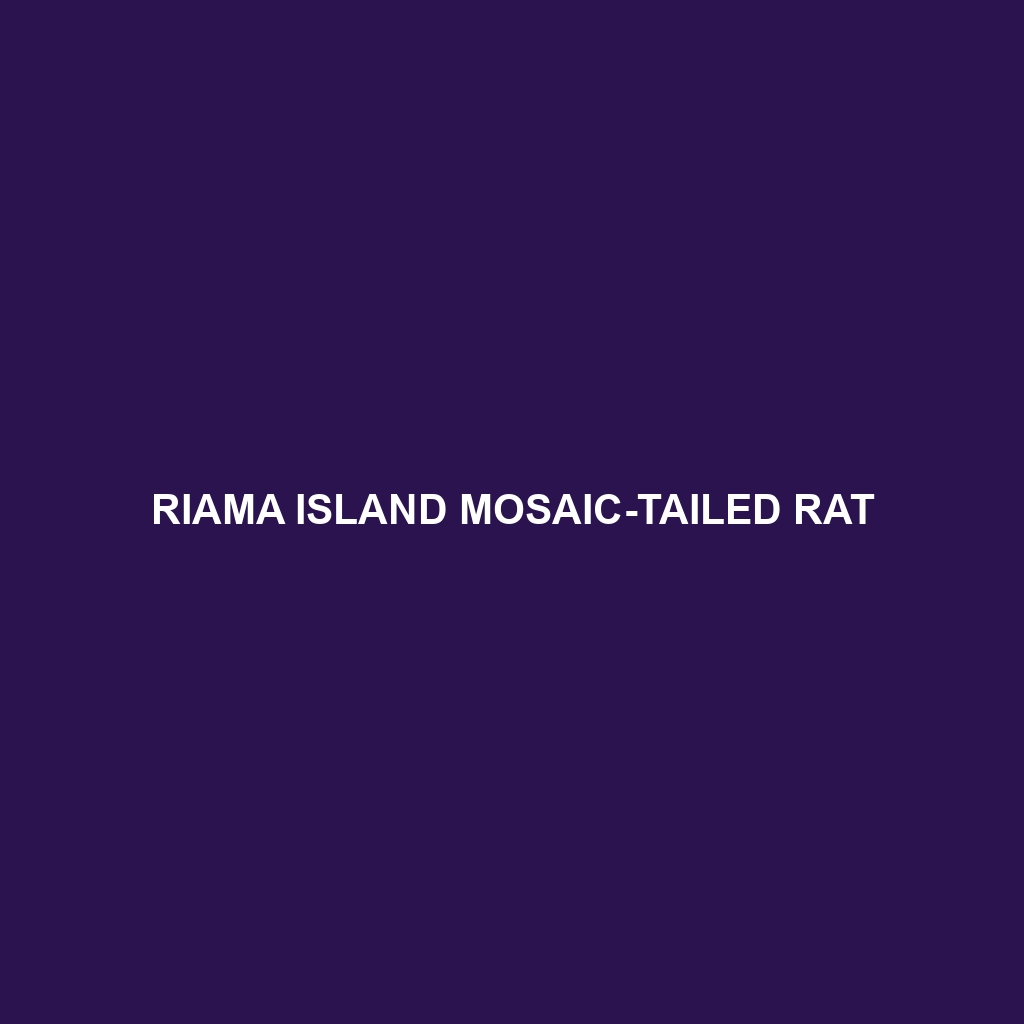Riama Island Mosaic-tailed Rat
Common Name: Riama Island Mosaic-tailed Rat
Scientific Name:
Habitat
The Riama Island Mosaic-tailed Rat is primarily found on Riama Island, located in the Solomon Islands. This species thrives in lush, tropical forests characterized by dense vegetation and high humidity levels. The rat typically inhabits areas close to riverbanks and other water sources, where foliage provides ample cover and food resources.
Physical Characteristics
The Riama Island Mosaic-tailed Rat is medium-sized, approximately 25-30 cm in length, excluding the tail. Its fur is a striking mix of dark brown and gray, featuring a mosaic pattern that helps it blend into its forest surroundings. Notable characteristics include a long, scaly tail, large ears, and prominent whiskers, which aid in navigating its habitat.
Behavior
This species exhibits primarily nocturnal behavior, making it more active during the night. The Riama Island Mosaic-tailed Rat is known for its agility and climbing skills, enabling it to navigate trees seamlessly in search of food. Socially, they tend to be solitary or found in small groups, showcasing territorial behaviors, particularly among males.
Diet
The diet of the Riama Island Mosaic-tailed Rat mainly consists of fruits, seeds, and leaves. It also forages for insects and small invertebrates, supplementing its diet with protein-rich sources. Due to its varied diet, this species plays a significant role in seed dispersal within its tropical ecosystem.
Reproduction
Breeding typically occurs during the wet season, when food sources are abundant. The female Riama Island Mosaic-tailed Rat usually gives birth to a litter of 2-4 young after a gestation period of approximately 28 days. Offspring are born altricial, meaning they are relatively helpless and require extensive care from their mother until they are weaned.
Conservation Status
The Riama Island Mosaic-tailed Rat is currently classified as endangered. Habitat destruction due to deforestation and human encroachment poses significant threats to its population. Conservation efforts are critical to preserving this unique species and its natural habitat.
Interesting Facts
One fascinating fact about the Riama Island Mosaic-tailed Rat is its unique camouflage ability, which allows it to evade predators effectively. Additionally, some studies suggest that this species may have a role in maintaining the ecological balance of its habitat through its foraging behavior.
Role in Ecosystem
The Riama Island Mosaic-tailed Rat is an integral part of its forest ecosystem. By feeding on fruits and seeds, it contributes to plant reproduction and diversity. Moreover, as a prey species for larger predators, it serves a vital role in the food web, supporting the overall health and stability of the ecosystem.
